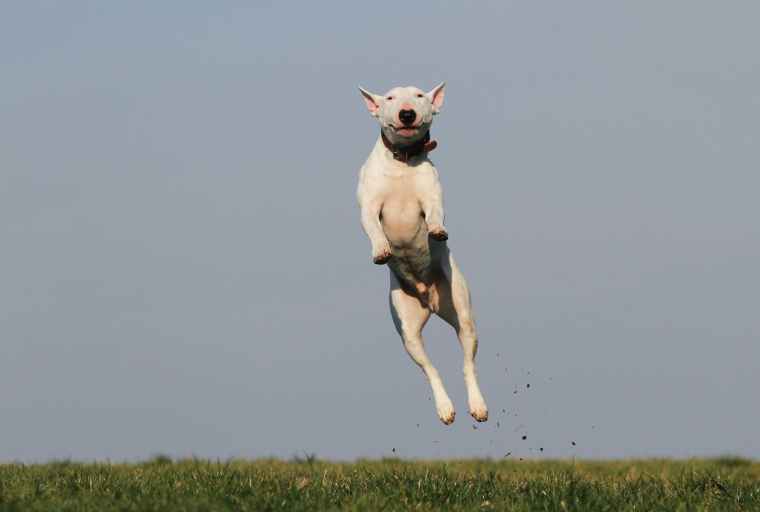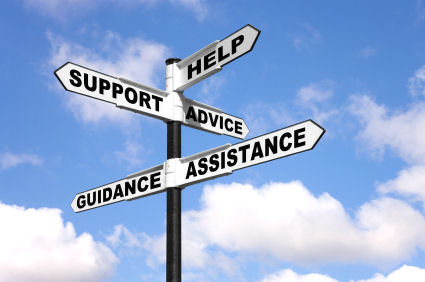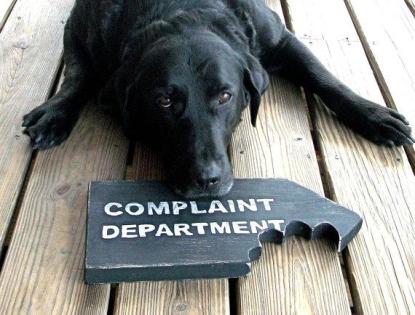I wrote a piece for Companion about why it isn’t selfish to take time off if we are unwell. It’s here.
Ten tips for managing stress at vet school
Ten tips for managing stress at vet school, written for BVA here.
What happens when you call Vetlife Helpline?
I wrote a piece about what you can expect if you call Vetlife Helpline, it’s here.
Time to talk about fatigue?
I’ve written a piece for Vetlife about fatigue, disrupted sleep, night working and wellbeing. You can read it here.

What to do if you’re worried about a colleague
Ebony Escalona and I have written a piece for The Veterinary Record about what to do if you’re worried about a colleague. It’s free to access via this link.
Stress: don’t be alone with it
I wrote a piece about stress for The Veterinary Record. The piece is free to access and you can read it here.
Vetlife At Christmas
I wrote here for BVA about Vetlife’s work at Christmas time.
Bouncing back: resilience training, what’s the evidence?

I’ve been invited by The British Veterinary Association to talk about resilience at The London Vet Show. I’ve blogged here, looking at the evidence on resilience training, and some of the problems with understandings of professional resilience:
Supporting practices after a suicide

Vets are three to four times more likely than the general population to die by suicide (Platt et al., 2010). The effect on families, friends and colleagues can be devastating. Every suicide is a tragedy, and for many people bereaved by suicide, the impact can affect them for the rest of their life. People used to say that each suicide impacted on average six other people, but the figure is now thought to be much higher.
There aren’t accurate figures for the suicide rate among veterinary nurses but there are some aspects of their work that suggest that they also may be at risk. As a profession with an elevated suicide rate it’s important that veterinary practices know how to respond if there is a suicide in their practice. It’s an event no one wants to prepare for, but there are several reasons why knowing what to do after a death is important. A lot of focus on suicide in society is on suicide prevention, and rightly so, as well as a human tragedy, suicide is a preventable public health problem and efforts to reduce risks and support people in crisis are vital, but an aspect of suicide prevention that is often overlooked is support for people bereaved by suicide, and what is called suicide postvention.
Postvention is responding to death by suicide in such a way that helps and supports those bereaved without increasing the risk of further suicides. Suicide clustering and suicide contagion are complex phenomena that aren’t fully understood, but some types of response to a suicide can increase the risk in those left behind, or trigger behaviours in those already vulnerable.
Bereavement as a risk factor
Recent research suggests that people bereaved by suicide are themselves at increased risk of suicidal thoughts and suicide attempts. Young people bereaved by suicide are more likely to go on to attempt suicide compared to young people who have suffered a sudden bereavement due to other causes. This effect holds whether the young person is blood-related to the person who had died or not (Pitman et al., 2016).
Suicide clusters, though rare, are an important consideration when responding to a death by suicide. There are two types of suicide cluster: point or space-time clusters occur where there are unusually high numbers of suicides in an institution or small geographical area in a short period of time; mass clusters are where suicides occur in a time period following and related to the publishing or broadcast of a fictional or actual suicide death (Joiner, 1999; Haw et al., 2013). There is evidence that the way suicide is reported in the media can influence future deaths, and Samaritans produce media guidelines on the responsible reporting of suicide to help minimise this effect.
A review of the evidence on suicide clustering found that those at increased risk are teenagers and young adults, men, people who have been directly involved with the person who died by suicide and people with other known risk factors for suicide. Clusters tend to occur in isolated or closed communities like schools, hospitals, prisons, the armed forces, and isolated rural or deprived communities (Haw et al., 2013; Niedzwiedz et al., 2014).
Complicated grief
As well as increasing suicide risk, bereavement by suicide has other profound impacts on those left behind. Grief in suicide bereavement shares characteristics with grief due to other causes but can also be more complex and last longer than grief where death was not due to suicide. The Survivors of Bereavement by Suicide charity is a good resource for information and the charity coordinates support groups for people affected.
People bereaved by suicide describe experiencing a range of emotions, from shock and disbelief. anger, guilt, shame because of the stigma and taboo of suicide, anxiety, fear, despair, and sometimes post traumatic reactions, especially if they have been the one who has found the person after they have died. Sometimes if the person has been suffering for a long time people can report experiencing feelings of relief, which in turn can lead to feelings of guilt. People can also feel guilty that they have survived whilst the other person has died. There is no right or wrong way to feel in suicide bereavement and it’s normal to return to different feelings, sometimes called stages of grief, at different times. Grief is not linear and people can return to stages they may already have experienced.
Practical considerations in the workplace
Suicide in colleagues can have other complications. If the person has died at the practice the police may close all or part of the building for a time to investigate the death. Police have responsibility for investigating the circumstances of a death, and for making a report to the Coroner in England and Wales, or Procurator Fiscal in Scotland. If drugs or equipment from the practice may have been used in the death the police may want access to order logs and recording books and may also want to see CCTV.
Colleagues in the practice may be in shock or grieving and may not feel able to continue with work immediately, especially if there are investigations occurring at the practice. As vets we still have responsibilities for the animals under our care. In the immediate aftermath it can help to reach out as a practice and arrange for another practice to cover emergency and 24 hour responsibilities so that police can access the practice and staff can make personal arrangements for support. Such arrangements can also be needed at the time of a funeral so all practice members who wish to can attend.
In England and Wales Coroners will hold an inquiry into the death, and in Scotland the Procurator Fiscal will investigate. These processes can be prolonged and distressing for those bereaved, and inquests can sometimes occur some time after the death, they can be especially difficult the case attracts media attention.
Practices also have considerations such as how to inform clients of a colleague’s death, and, in time, whether to formally remember the person in the workplace. It’s natural to want to remember someone, but some types of memorials can trigger risk in vulnerable people, and permeant public memorials are generally discouraged by organisations working in suicide postvention. Online tribute pages can also pose risks, with comments often published elsewhere without permission, and such pages attracting attacks and bullying. Samaritans advise that public memorials are time limited, and after a period, tributes are sent to the family in private not displayed publicly.
Handling the media
There is often media interest in veterinary suicides, and media contacts can feel intrusive and upsetting. It can help to have a planned response to this as a practice. Nominate a single person as a spokesperson and discourage others in the practice from making comments to the media. Prepare a statement and do not deviate from it, avoid sensationalizing the death, and don’t give details of the suicide method or anything written in a suicide note. Samaritans guidance also encourages people to avoid giving simple ‘explanations’ of a suicide such as ‘they were stressed about a complaint’.
Support
It’s vitally important that people can access support after a suicide, in their own way, and at their own pace. Some people may want to talk with friends, family and colleagues, whereas others may feel they need more professional support. There is no right or wrong way to cope.
Sometimes after a death organisations arrange formal counselling for staff. There is mixed evidence on this, where people want counselling it can be helpful, but some types of debriefing, such as formal group debriefing or critical incident stress debriefing, after a traumatic incident can actually increase the likelihood of developing PTSD, so it is important to be guided by what staff want, offer support but do not force people to take part if they don’t want, or feel ready to talk.
Some people find support groups and meeting others who have been bereaved by suicide helpful, Survivors of Bereavement by Suicide coordinates a network of groups around the UK.
How Vetlife can help
Vetlife, the charity that supports the veterinary community, also offers services to help after suicide. Vetlife Helpline is available by phone or email 24 hours a day for listening and emotional support. Vetlife Health Support can support practices in more practical ways, where a practice requests, Vetlife can visit the practice and support staff who want to talk.
Vetlife financial support can also support the families of vets who have been bereaved by suicide. Some life insurance policies do not cover deaths by suicide, and bank accounts can also be inaccessible to family for a time. Practices can let families know that Vetlife can often help with grants or loans in these situations.
Language
Suicide is stigmatised and it can be a very difficult subject to talk about. Organisations working in this area recommend to consider the language used when talking about a death. For example saying someone has “committed suicide” dates back to when suicide was a criminal offence, and can be stigmatising and upsetting for those impacted. “Died by suicide” or “taken their own life” are less stigmatising alternatives. Similarly, talking about “completed suicide” or “successful suicide” to differentiate someone who has died by suicide as opposed to an “unsuccessful” or “incomplete” attempt, is said by some who have lived experience of suicidal thoughts to increase their distress, as they feel it suggests that they’ve “failed” at suicide, and that dying is a success, or that death makes them complete. When talking about someone who has died by suicide or who has attempted suicide, using alternatives to “successful”, “committed”, or “completed”, is preferable.
Summary
We know from the research evidence that the way people respond to a suicide is a key part of suicide prevention for others, and in managing difficult and complex grief.
In the shock and grief in the immediate aftermath of suicide it can be difficult to know what to do, but there are organisations who want to help, and who can support your practice. Vetlife Helpline is available 24 hours a day, and can signpost you to further resources. The resources below may also be of help.
If you need to talk, support is available 24 hours a day, Vetlife can be called 0303 040 2551, or freephone Samaritans 116 123
Resources
Survivors of Bereavement by Suicide (SOBS) website: http://uk-sobs.org.uk/
Support after a suicide, SOBS booklet: http://uk-sobs.org.uk/wp-content/uploads/2014/02/SupportAfterASuicide.pdf
Samaritans postvention advice: http://www.samaritans.org/your-community/supporting-schools/step-step/step-step-frequently-asked-questions
Vetlife website: www.vetlife.org.uk
Vetlife helpline: 0303 040 2551, or email via the Vetlife website
References
HAW, C. et al. Suicide clusters: a review of risk factors and mechanisms. Suicide Life Threat Behav, v. 43, n. 1, p. 97-108, Feb 2013.
JOINER, T. E. The clustering and contagion of suicide. Current Directions in Psychological Science, v. 8, p. 89-92, 1999.
NIEDZWIEDZ, C. et al. The definition and epidemiology of clusters of suicidal behavior: a systematic review. Suicide Life Threat Behav, v. 44, n. 5, p. 569-81, Oct 2014.
PITMAN, A. L. et al. Bereavement by suicide as a risk factor for suicide attempt: a cross-sectional national UK-wide study of 3432 young bereaved adults. BMJ Open, v. 6, n. 1, 2016.
PLATT, B. et al. Systematic review of the prevalence of suicide in veterinary surgeons. Occup Med (Lond), v. 60, n. 6, p. 436-46, Sep 2010. ISSN 1471-8405.
SAMARITANS. Media guidelines for reporting suicide. 2013. http://www.samaritans.org/media-centre/media-guidelines-reporting-suicide
Complaints, fear, and hope

Every year in the springtime I ask several hundred vet students two questions:
What do you hope for from your veterinary career, and what do you fear?
Within the first few fears, someone will mention complaints. Even before starting out in practice, and never having received one, complaints are a source of worry for the vet profession. I’ve written about complaints before. There has not been much research on the impact of complaints on vets, but several recent papers from the medical profession make concerning reading, and have parallels for vets and vet nurses.
Last year, Professor Tom Bourne and colleagues published a study showing that doctors who had recently received a complaint of any kind were 77% more likely to suffer from moderate to severe depression than those who have never had a complaint. The impact was most serious when the complaint led to a referral to doctors’ regulatory body the General Medical Council (GMC). Doctors who had received a complaint were also at double the risk of having thoughts of self-harm and more likely to experience suicidal thoughts.
For professions like medicine and veterinary medicine which have elevated suicide rates compared to the general population, understanding factors like this which contribute to suicidal thoughts is vital.
A follow up to this research was published yesterday in BMJ Open. It’s a qualitative analysis of survey responses to three questions:
1. Try to summarise as best as you can your experience of the complaints process and how it made you feel.
2. What were the most stressful aspects of the complaint?
3. What would you improve in the complaints system?
It won’t come as a surprise to anyone who has received a complaint as a vet or vet nurse that complaints had a profound impact on many of the doctors in the study. Complaints caused emotional distress, left doctors feeling powerless and impotent, they impacted on the way that the doctors worked by increasing defensive practice, and almost a quarter considered leaving medicine altogether. Feeling unsupported was not uncommon, nor was feeling the process was unfair or weighted against them. Worryingly too, only 6% felt the complaint had been a learning experience.
It is important and necessary that people can complain about doctors and vets, but when such a small proportion of those investigated say they have learnt from the experience, and it causes so much harm, including in some cases contributing to suicidal thoughts and behaviour, something needs to change. This is further highlighted by the finding that the way doctors feel after a complaint actually makes their practice less safe for patients because of defensive practice, not more so.
We need to repeat this work in vets, and I’m currently working on a study that has spoken with vets about the impact complaints have had on them. It’s important to understand if this study from medicine translates to vets, but there are a number of types of evidence that suggest that it might.
A similarity in the handling of complaints about doctors and vets is investigation by a professional regulator. For doctors in the UK, this is the GMC, and for vets, the RCVS. Concerns relating to fitness to practice which may be from complaints, or performance or health concerns, can be taken up by the regulator, and subject to a process of investigation. In the study of doctors, complaints that had gone to the GMC caused the highest levels of distress, depression and anxiety.
Between 2005 and 2013, 28 doctors with an open GMC case died by suicide. Last year the GMC commissioned Professor Louis Appleby to review their disciplinary process to make it less harmful to doctors. His draft recommendations have now been published, and include:
- Avoiding full investigations whenever possible in cases that are (solely or primarily) about a doctor’s health.
- Reduce stress in all investigations through changes to process, communication, and duration.
- Pursue consensual conclusion as the preferred outcome.
- Expand support for doctors during the fitness to practise process including a tribunal hearing.
The study published yesterday also has suggestions for how to reduce the harmful impacts of investigation, including attention to the timeframes of complaint investigations. One of the biggest causes of distress in vets in my research who have experienced complaints is the time it took for the complaint to be resolved. Investigation processes need to meet statutory requirements and protecting the public, and in vets case, also protect animals. They must also be fair, and there can be many good reasons for delays, but limiting the time of investigation could help reduce the potential for harm.
It’s good to hear that there is soon to be an external review of RCVS professional conduct processes. To reduce the veterinary suicide rate we need to understand how to make investigation and regulation safer for vets, as we know complaints and investigations contribute to suicidal thoughts and behaviour. I’d like to see changes to processes to reduce the unintended harm that can be caused, and support for vets who have experienced a complaint or investigation. We need to understand the fear that vets experience associated with complaints. Research suggests even people who never receive one can be impacted by having witnessed colleagues or heard of complaints about others. It can be hard to imagine the anguish and fear vets going through complaints processes can experience in those situations. We need to listen to them, and learn how to better support them, no one should have to go through that alone. We also need to think about how complaints processes can be improved so that the fear and perceived blame culture changes, and complaints are safe for the clinician going through the process, the complainant, and also the patients and public we serve in future. We need learning where things have gone wrong and development, not defensive medicine.
Vetlife Helpline is available 24 hours a day for vets and vet nurses in distress and often takes calls about complaints, call 0303 040 2551 or email via http://www.vetlife.org.uk